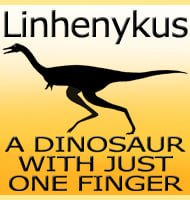In Depth
One of the most striking characteristics of Leptictidium are the well-developed hind legs that are considered to have made this creature one of the rare few bipedal mammals (the others being humans and the macropods such as kangaroos and wallabies). The biggest problem with Leptictidium however is that we can’t be certain as to how it moved about. Many people may remember how Leptictidium was depicted in the 2001 BBC series Walking with Beasts (alternatively known as Walking with Prehistoric Beasts) where in the episode ‘New Dawn’ Leptictidium was shown to hop about in a similar fashion to kangaroos. This form of locomotion is supported by the shape and proportion of the legs which would allow for powerful tendons to run across the length of the bones and act as springs for jumping. However analysis of the bones has concluded that skeletally Leptictidium was too weak to withstand the forces involved with repeated jumping, which leads to the idea that Leptictidium may have been more of a runner that could occasionally jump when necessary. The only possible compensation for the weak skeletal structure is that the ankles and pelvis were loosely connected, so it might be that soft tissue of living Leptictidium was arranged to withstand some of the shocks of jumping. Regardless of whether it was a runner, hopper or indeed both, Leptictidium was am agile creature that would have had a fairly easy time moving around the forest floors of Eocene era Europe.
Some of the best preserved remains of Leptictidium reveal both animals and plants in the stomach area, although animals such as insects and lizards seem to be far more common. This suggests that while Leptictidium could and would eat plants, it had a greater tendency to hunt for small animals. One feature that probably helped Leptictidium to forage for food was the elongated snout, the presence of which is indicated by the shape of the snout bones of the skull. This snout could have been worked into small areas to detect things like hidden fruits and insects, possibly to the point of being able to manipulate them out into the open. The fore limbs of Leptictidium which are much smaller than the rear limbs seem to be well suited for grasping and holding onto things which means that Leptictidium may have held food and prey in between its forelimbs as it ate just like how a squirrel will eat nuts today.
In terms of size there is a lot of variation between species of Leptictidium. So far the type species of L. tobieni is the largest at up to ninety centimetres long (half of which is tail). By contrast the smallest species of Leptictidium is L. auderiense is only six centimetres long. Further differences in species are established upon the basis of varying dentition and skeletal proportions. Leptictidium disappears from fossil deposits at the end of the Eocene period and this disappearance is usually credited as being part of a shift in the habitat from warm subtropical forests to more open plains and woodland. This change meant that Leptictidium no longer had the cover of the forest for protection and with new predators coming onto the scene, Leptictidium waned in numbers until an inevitable extinction.
Further Reading
– Leptictidium nasutum n sp., ein Pseudorhyncocyonide aus dem Eoz�n der “Grube Messel” bei Darmstadt (Mammalia, Proteutheria). – Senckenbergiana Lethaea 66. – Adrian Lister & Gerhard Storch – 1985. – Leptictidium tobieni n sp., ein dritter Pseudorhyncocyonide (Proteutheria, Mammalia) aus dem Eoz�n von Messel. – Cour. Forsch.-Inst. Senckenberg 91: 107–116, 9 Abb. – Wighart von Koenigswald & Gerhard Storch – 1987. – The postcranial skeleton of early Oligocene Leptictis (Mammalia: Leptictida), with preliminary comparison to Leptictidium from the middle Eocene of Messel. – Palaeontographica Abteilung a -Stuttgart- 278(1):37-56. – Kenneth D. Rose – 2006.










